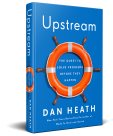Do people know how many calories they should be consuming on a daily basis to maintain their weight? And do they have an intuition about how many calories are in the food items they’re consuming?
No and no, according to this interesting NYT article. Many restaurants in New York City will soon have to display calorie information on their menus. But, in the absence of the necessary context, the data may not have much impact. Nutrition professor Marion Nestle sums it up nicely: “The idea of a calorie is a very abstract concept,” she said. “People have some vague idea that it involves energy and is somehow related to weight gain, but they have no idea what it means in relation to food. You can’t tell how many calories you’re eating by looking.”
Case in point: The Outback Steakhouse’s Bloomin’ Onion has 1,800 calories. And that’s supposed to be an appetizer. (Which is disappointing, because I adore the Bloomin’ Onion. But if I’m going to blow 1,800 calories on junk food, I’d look no further than 9 warm Krispy Kreme doughnuts. To each his own.)
In the first chapter of our book, we discuss an analogous case. The CSPI had discovered that a medium-sized bag of movie popcorn had 37g of saturated fat. So what? Is that good or bad? If bad, how bad? The CSPI found an ingenious way to communicate the unhealthiness of the movie popcorn without resorting to a lesson on daily fat allowances and that sort of thing. (We won’t give away the ending in case you want to read the chapter.)
So far, the government’s efforts to communicate basic information about calories have been ineffectual. The reporter, Kim Severson, gets in a nice zinger: “Trying to find out how many calories one should eat at mypyramid.com, the government’s latest effort to help the public interpret its Dietary Guidelines, is an exercise in frustration. Plug the word “calories” into the search engine and 254 entries pop up. After clicking through a few dozen, it seems easier to just give up and go out for a doughnut (180 calories).” My thoughts exactly.
The Food Pyramid is wondrously non-sticky. Preposterously non-sticky. After I plugged in my age, sex, and exercise habits, I was given the following helpful information:
- Aim for at least 4.5 whole grains a day
- Aim for 8 teaspoons of oil a day
- Have 2 ½ cups of “orange vegetables” weekly
Well, great, that clears it all up.
Who, on earth, thinks about their daily food intake in terms of the number of “teaspoons of oil” it contains? Who can define half a grain? Are you kidding me? I’m surprised they’ve left out the helpful advice about ensuring a daily intake of at least 10,000 IU of Vitamin A…
Concreteness—one of the six principles of sticky ideas—is what’s needed here. Here’s what I’d suggest: Given my recommended caloric intake, show me 6 daily menus – including pictures! – that would fit my budget. Paint a picture for me, using real-world products: “Dan, if you eat Dannon yogurt and coffee for breakfast, a Taco Bell quesadilla for lunch, and a can of Wolf-brand chili for dinner, you’re good.” And then, by way of comparison, show me 6 daily menus that will make me 10 pounds fatter at the end of the year. If I could see these kinds of real-world menus, I could start building an intuition about what’s “appropriate” for me. 8 teaspoons of oil leaves me intuition-free.



